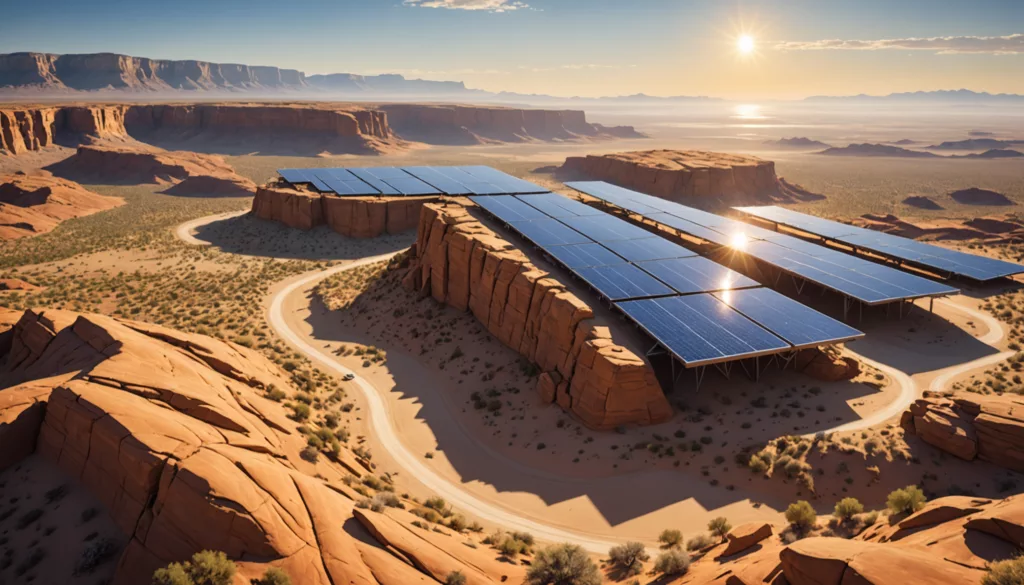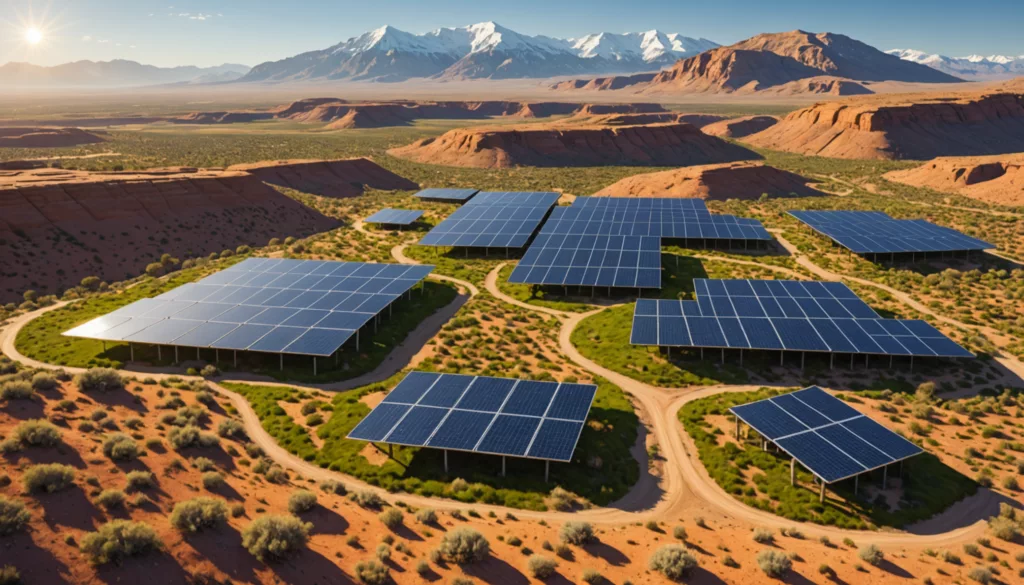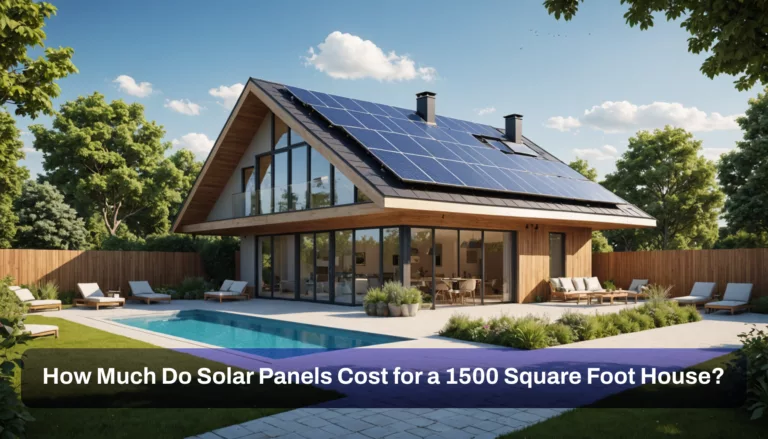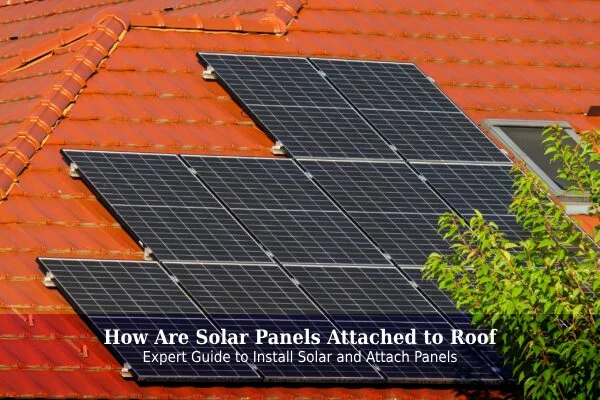Explain How Location Plays a Role in Solar Energy Efficiency
Imagine transforming your home into a mini power plant – it’s not science fiction, but it does require some smart planning! To effectively explain how location plays a role in solar energy efficiency, we need to understand that where you place your solar panels can make the difference between outstanding energy production and disappointing results. Just like a garden needs the right amount of sunlight to thrive, your solar panels need optimal positioning and environmental conditions to generate maximum power.
Getting your solar panel location wrong could cost you thousands in lost energy production over the years. That’s why we’re diving into the key factors that make certain spots perfect for solar panels, including sun exposure, roof angle, and local weather patterns. Whether you’re a DIY solar enthusiast or planning your first installation, this guide will help you unlock your home’s solar potential and maximize your renewable energy investment. Get ready to discover the secrets of perfect solar panel placement!
How Location Affects Solar Panel Efficiency

Location plays a vital role in determining overall energy output. Abundant sunlight striking solar panels increases electricity production. Examining these location-based factors is crucial to explain how location plays a role in solar energy efficiency and to optimize energy consumption.
The Importance of Location in Solar Energy Generation
Solar panels perform best where direct sunlight is plentiful throughout the year. Many desert regions, such as Arizona, capture up to 40% more solar energy than areas with frequent cloudy weather. Spots near the equator receive intense sunlight and longer daylight hours, which boosts energy output.
Ideal sites for solar panels combine several conditions:
• Clear access to sunlight
• Minimal shade from buildings or trees
• Proper angle based on geographic location
• Limited exposure to extreme weather events
Understanding How Different Locations Impact Solar Panel Performance
Solar panel output varies with local climate. Desert climates feature low humidity and sparse cloud cover, allowing more sun to reach panel surfaces. Coastal regions have greater cloud cover, which can reduce production by about 20–25% on overcast days.
| Climate Type | Average Daily Energy Production |
|---|---|
| Desert | 5–6 kWh per kW installed |
| Coastal | 4–5 kWh per kW installed |
| Mountain | 4.5–5.5 kWh per kW installed |
| Urban | 3.5–4.5 kWh per kW installed |
Key Geographic Factors That Influence Solar Energy Production
Latitude Position
• Lower latitudes benefit from more direct sunlight
• The equator receives consistent sun exposure year-round
• Higher latitudes have greater seasonal differences
Local Weather
• Heavy cloud cover decreases conversion efficiency
• Elevated temperatures may lower panel output
• A blanket of snow can reflect light and temporarily boost production
Research from Science Direct shows that geographic location may shift annual energy output by as much as 40% between sunniest and cloudiest regions in the United States (Sciencedirect). Further insights from the U.S. Department of Energy emphasize the importance of desert climates and clear skies in expanding renewable energies (U.S. Department of Energy).
Evaluating the Role of Sunlight in Power Generation

Sunlight serves as the main source of energy for solar panels. You can boost solar energy efficiency by understanding how the amount of sunlight, panel angle, and local weather patterns influence power generation. Proper panel placement can improve overall system performance.
Maximizing Electricity Generation Through Strategic Positioning
Positioning your panels for direct sun exposure helps capture more usable energy. In the Northern Hemisphere, south-facing placements receive the most sunlight. An optimal tilt angle often matches your site’s latitude. Clear, unobstructed areas prevent shade and ensure each panel absorbs the maximum amount of sunlight.
How Angle and Direction Affect Solar Panel Efficiency
Panel angle and direction play a vital role in solar energy production. Morning and afternoon sun rays hit your panels at different angles, so any deviation can reduce efficiency:
| Angle Deviation | Efficiency Loss |
|---|---|
| 5° | 1-2% |
| 15° | 3-6% |
| 30° | 10-15% |
According to the National Renewable Energy Laboratory, examining these angles during the siting process helps account for seasonal shifts and inclement weather.
Calculating Peak Sun Hours in Your Location
Peak sun hours measure when panels receive full irradiance of 1000W/m². This period varies by geographical location, weather conditions, and latitude. Most U.S. regions average 3-7 peak sun hours each day. Tracking these hours reveals how local climate factors influence solar energy production. Adding a solar tracking system can boost energy capture by 25-35% and help you handle extreme temperatures or cloudy weather.
Factors to Consider When Choosing a Location for Solar Panels

Assessing Your Property’s Solar Potential
You gain the most energy capture by placing panels on surfaces that face south in the Northern Hemisphere. A tilt angle between 30 and 45 degrees often delivers optimal performance, though the exact angle can depend on your geographic location. Aim for at least four hours of direct sun exposure to boost solar panel efficiency and keep your daily energy usage in mind when deciding how many panels you need. Tools like solar mapping software and professional assessments help you examine annual sunlight and shadow patterns.
Understanding Local Climate Patterns
Weather conditions also play a vital role in your system’s energy output. Cloudy weather can lower production by 10–25%, while extreme temperatures may affect efficiency. Snow can reflect sunlight and sometimes boost energy intake, but a heavy blanket of snow blocks panels until removed. Regions with ample sun and moderate temperatures often offer higher solar panel performance.
Identifying Optimal Installation Sites
Reliable sites have stable ground or sturdy roofs that support solar installations. You need enough space to fit the desired panel size and ensure good drainage for safety. By selecting an ideal location, you can enhance your panel’s conversion efficiency and reduce solar panel output losses. Consult local building codes and an experienced solar installer to confirm structural integrity.
Dealing with Shade and Obstacles
Shade significantly impacts solar energy production because even partial blockages can lower an entire system’s capacity by 25–35%. Observe any trees or nearby structures that cast shadows, especially from 9 AM to 3 PM when sun’s rays are strongest. Removing or trimming vegetation helps maintain high energy output. Factoring future growth or construction plans into your chosen site.
By following these guidelines, you explain how location plays a role in solar energy efficiency and set up a system that thrives under the sun. Proper placement and careful climate considerations unlock affordable solutions that reduce electricity bills and support renewable energy goals.
Recent Studies on Solar Energy and Location Efficiency

Recent analyses from 2022 and 2023 show that geographic location strongly influences solar energy systems. Most solar panels function at peak efficiency between 15°C and 35°C (59-95°F), with a 0.3-0.5% efficiency drop for each degree above that range. Studies also confirm that location-based variables, such as ambient temperature and sun exposure, can cause an overall efficiency variation of 10-25%.
Latest Research on Location-Based Solar Performance
Scholars have found that solar panel output depends on climate, terrain, and the amount of sunlight throughout the year. Regions with mild temperatures usually see steadier energy production, while hotter areas encounter small but consistent efficiency reductions. These findings explain how location plays a role in solar energy efficiency and highlight why accurate siting is crucial.
Real-World Examples from Different Climate Zones
Temperate zones typically experience a 10-15% fluctuation in annual energy output, suggesting that a 30-45° panel tilt is beneficial for harnessing optimal sun exposure. In tropical regions, there are 5-7 peak sun hours each day, but higher ambient temperatures can decrease panel efficiency. Weather conditions also play a major role by affecting heat absorption and reflection.
Impact of Regional Policies on Solar Implementation
Studies show that solar-friendly incentives can boost adoption rates by 20-30%. Local programs often promote battery storage systems and proper panel placement to capture maximum energy output. Updated building codes and renewable energy targets further encourage optimal installation strategies that reduce overall dependency on fossil fuels.
Recommendations for Maximizing Solar Panel Efficiency

Location plays a vital role in solar energy efficiency. You gain maximum efficiency by matching panel placement and upkeep to local conditions. Proper setup based on regional factors can substantially boost energy production. Thorough assessments of roof orientation and sunlight hours lead to more efficient systems.
Professional Tips for Location Assessment
Perform a detailed site survey before you install solar panels. Examine yearly sun exposure and look for objects that cause partial shading. Evaluate roof angles, structural integrity, and local regulations. Explain how location plays a role in solar energy efficiency by measuring available sunlight, tilt requirements, and building codes. This careful siting process gives you a strong foundation for capturing solar energy.
• Solar Access Analysis
- Track daily energy usage and verify open sky views
- Watch for shadows from trees and complex roofs
- Adjust panel angles based on latitude
• Site-Specific Considerations
- Secure rooftops or ground conditions
- Check land availability for large-scale PV plants
- Ensure compliance with local permitting processes
Best Practices for Installation Positioning
Position your panels for maximum sun exposure throughout the year. Aim them toward true south (in the northern hemisphere) at the recommended tilt for your region. Keep rows of panels spaced to prevent shading and allow easy cooling systems access. If you live in Arizona or other sunny regions, you often see higher average electricity consumption offsets due to stronger sun coverage. Complex roofs or congested grids might need specialized mounting systems to maintain optimal performance.
| Geographic Location | Recommended Tilt Angle |
|---|---|
| Southern States | 25-30 degrees |
| Central States | 30-35 degrees |
| Northern States | 35-45 degrees |
Maintenance Considerations Based on Location
Adjust maintenance plans to local conditions also play a crucial role. Coastal areas need rust-resistant fixtures and regular cleaning to remove salt deposits. Snow-prone regions benefit from enhanced structural support and snow removal systems to avoid a blanket of snow on panels. Desert locations face extreme temperatures, so monthly dust removal and heat dissipation checks are essential. Regular inspections, at least twice a year, help you identify issues early and maintain maximum efficiency.
Future-Proofing Your Solar Investment

A solar power system is a substantial expense that can deliver clean energy for decades. When you explain how location plays a role in solar energy efficiency, it helps you plan for different weather conditions also play a vital role in preserving daily energy usage. Seasonal changes, sun paths, and local climate patterns each influence long-term performance.
Adapting to Seasonal Changes
Seasonal shifts can significantly impact solar energy production. In regions that experience heavy snow, a blanket of snow may reduce energy capture. Safe removal techniques or adjustable mounting systems provide actionable solutions to protect output. In hotter months, higher temperatures can decrease conversion efficiency, so consider cooling systems to boost panel performance. Adjusting your panel tilt angle two to four times each year matches changing sun angles.
Long-term Performance Optimization
A regular maintenance schedule ensures maximum efficiency. Clean panels every three to six months to remove dust and debris, and trim any shadow-producing vegetation. Check system components, such as central inverters and racking hardware, at least twice a year. Document weather impacts—like 24 billion-dollar weather extremes—to spot patterns in energy production. This approach helps reduce solar panel output losses and keeps your investment in top shape.
Monitoring and Adjustment Strategies
Modern monitoring tools track energy output in real time. These systems send alerts when performance drops, allowing immediate action to prevent long-term damage. When you explain how location plays a role in solar energy efficiency, focus on local conditions also play a crucial role in panel placement and angle. Scheduling professional inspections every two to three years further protects capacity and identifies any decrease in conversion efficiency before it becomes costly.
Conclusion
Understanding your location’s role in solar energy efficiency is crucial for maximizing your solar investment. From sunlight availability and panel positioning to local weather patterns, these factors work together to determine how well your solar panels will perform. By carefully considering your property’s specific conditions and working with professional installers, you can optimize your solar setup for the best possible results.
Your geographical location doesn’t have to limit your solar potential. With proper planning and strategic placement, solar panels can be effective in various climates and settings. Whether you’re in a sunny desert region or an area with variable weather, modern solar technology offers solutions to help you harness clean, renewable energy efficiently. By staying informed about your location’s unique characteristics and maintaining your system appropriately, you’re well on your way to achieving optimal solar energy production for years to come.
FAQs
1. How does latitude affect solar panel efficiency?
You gain more direct sunlight when you live closer to the equator, which can boost output by 20-30%. Higher latitudes receive a lower sun angle, so panels collect less radiation. To counter this, you adjust the optimal tilt angle to capture the maximum amount of sunlight.
2. What role do weather patterns play in solar energy production?
Cloudy weather often cuts solar efficiency by 10-25%, with thicker clouds creating bigger drops. Panels operate best around 77°F (25°C), so extreme temperatures reduce production. Humidity can decrease efficiency by 2-4%, yet snow reflection sometimes boosts power by reflecting extra light onto panels.
3. How can I determine the best location for solar panels?
If you want to explain how location plays a role in solar energy efficiency, start by assessing roof orientation, angle, and local climate. A south-facing roof is ideal in the Northern Hemisphere, and 30-45 degrees is a common tilt range. You should also review sun hours, cloudy weather trends, and potential shading throughout each day.
4. What impact does shading have on solar panel performance?
Shadows from trees, chimneys, or nearby buildings can reduce efficiency by up to 35%. Just one shaded cell may cut a panel’s power by around one-third. Morning shade differs from afternoon shade, so you check daily patterns to avoid major losses. Modern microinverters or optimizers help keep output high in partly shaded setups.
5. How do seasonal changes affect solar energy generation?
Summer days can produce about 65% more energy than winter, thanks to longer sunlight hours. Winter generation drops by 20-35%, and a blanket of snow can reduce panel output up to 90%. Spring and fall often provide ideal conditions, since moderate temperatures allow panels to run at near-maximum efficiency.







